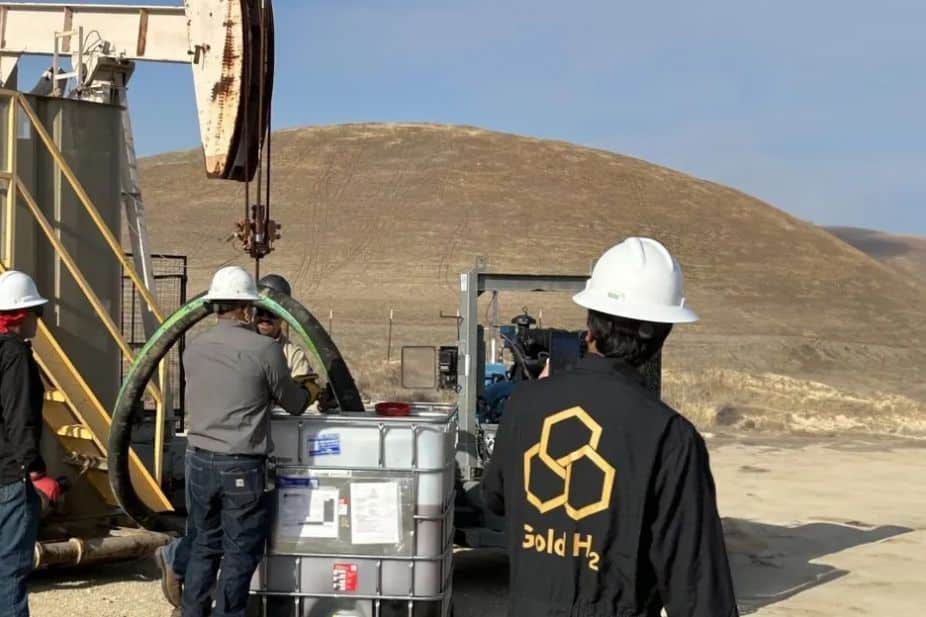Gold H2 has completed the field trial of subsurface bio-stimulated hydrogen generation, successfully producing hydrogen from a depleted oilfield in California’s San Joaquin Basin.
The test yielded a gas stream with 40% hydrogen content, validating a novel approach that leverages microbiology to convert residual hydrocarbons into clean hydrogen — with no need for new drilling or surface infrastructure.
The implications are significant. California alone has over 30 billion barrels of unrecoverable oil in legacy fields. If even a fraction of these resources can be repurposed into bio-hydrogen generation, they could become a strategic pillar in the state’s decarbonization strategy. Gold H2 estimates that the San Joaquin Basin could produce enough hydrogen to supply Los Angeles for more than half a century.
Unlike conventional hydrogen production routes — whether via natural gas reforming or water electrolysis — Gold H2’s approach requires minimal capital investment. The company activates naturally occurring microbes in depleted reservoirs using proprietary nutrient formulations. These microbes metabolize trapped hydrocarbons, releasing hydrogen in situ. The process operates at relatively low temperatures and pressures, and the hydrogen-rich gas is then extracted using existing wellbores.
The scalability question is central. Electrolytic hydrogen, while emissions-free, is constrained by water demand, renewable energy availability, and high capital costs. Steam methane reforming with carbon capture — the so-called “blue hydrogen” route — still carries emissions and relies on volatile fossil fuel markets. In contrast, bio-stimulated hydrogen could serve as a transitional bridge by transforming carbon liabilities into clean energy resources.
There are, however, open questions. Long-term hydrogen yields per well, reservoir heterogeneity, and microbial lifecycle dynamics all require further study. Moreover, while the hydrogen output in the trial reached 40% by volume, commercial viability will depend on maintaining or exceeding that threshold consistently across a wider portfolio of fields.
Still, early momentum is building. Gold H2’s model sidesteps many of the infrastructure and permitting hurdles that plague other hydrogen pathways. By utilizing already-developed oilfields — complete with wellheads, flowlines, and regulatory frameworks — the company’s solution could potentially scale at a fraction of the cost and time required for green hydrogen projects.
If proven at scale, the implications go beyond California. Globally, hundreds of billions of barrels of unrecoverable oil sit idle in mature basins. Converting these fields into decentralized hydrogen hubs could align energy transition goals with energy security and infrastructure reuse.
Stay updated on the latest in energy! Follow us on LinkedIn, Facebook, and X for real-time news and insights. Don’t miss out on exclusive interviews and webinars—subscribe to our YouTube channel today! Join our community and be part of the conversation shaping the future of energy.





